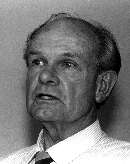 |
| image credit |
 Courtesy: http://www.imta.ch/
Courtesy: http://www.imta.ch/
I am a big believer of standing on the shoulders of giants. Even though I am not “Maitland trained”—I use his constructs of concordant sign, sensitivity/irritability and several other clinical reasoning aspects in my examination and treatment approaches. You cannot deny the impact he had on our profession.
I am reaching a decade now (old man status!) of treating in clinical practice and feel like I am seeing more and more that our predecessors are being put down, bashed, exonerated by writings and teachings of that time. Maybe this is not everyone of course, but through the pits of social media, the bubble is expanding. I am all about growth and science, but the concepts and principles behind assessing and treatment can still stand strong. I always remember this foundation and add research on top of it—-to make things positive overall for us, keep reading and pounding out knowledge as the PT profession continues to grow as the best team in musculoskeletal conservative care with updates in research as the “why” of “what” we do is better explained.
Remember—it is always easier to critique than create.
We build off of each other and grow with decades of research, clinical practice and self reflection. The way I see it—the time line of growth and education is not linear, but builds off like tree rings.
With that being said, it brings me to this excerpt from Maitland in 1979 about differentiating dizziness from arterial dysfunction (i.e. vertebrobasilar insufficiency) to cervical spine dysfunction.

Of course by just reading this, we can mock the lack of clinical metrics behind this thought process (where are the sensitivity and specificity values!?), where is the research citation, how many of your dizziness folks can just go and lie prone??—- However, it is a concept based off of standardized thought processes in our field—-looking at effects of gravity, loaded/unloaded positions, reactions in latency and duration of symptoms, etc.
I would second guess this thought process by saying first we need to evaluate blood pressure, heart rate and appreciate the entire haemodynamic system! We need to do a thorough screen prior to putting the neck at a risk for mechanical thrombus if the patient walks in with a spontaneous dissection! We need to rule out a higher probability of dizziness through other benign conditions, such as through a canalith repositioning manuever! Bam Bam Bam!
The previous paragraph is partly what I teach in my Optimal Sequence Algorithm to diagnose Cerviogenic Dizziness. I feel the components of the examination are the most sound, evidence-based approach based off of concept of diagnosis of exclusion, other reasonable reasons for symptoms, epidemiological data and prevalence/incidence of cervicogenic dizziness in the population.
Interesting enough….DeKlyne first spoke about the VBI test over 75 years ago and this wasn’t mentioned in Maitland’s work from 1979….Maybe he already knew the limitations behind it before we had clinical guidelines and clinical metrics. I’m certainly glad he didn’t say drop the patient’s head off the edge of the table and see what happens.
Maybe its the history buff in me, but I enjoy looking back at these old articles. They really can be considered blogs of modern times—-written by 1 author, 3-4 references and straight clinical interpretations. Don’t give up on our past—but use it positively to build our future.
Sign up for more emails on this topic by clicking here
You can learn more about the screening and treatment process of Cervicogenic Dizzinesss through Integrative Clinical Concepts, where the authors (husband–a manual therapist a wife—a vestibular specialist), teach a very unique course combining both the theory and practice of vestibular and manual principles in their 2-day course. Pertinent to this blog post, the first day provides the most up-to-date evidence review from multiple disciplines to diagnose through the “Optimal Sequence Algorithm” to assist in ruling out disorders and ruling in cervical spine, including determining if single or double entity exists.
If you would like to host a course for your staff (either a vestibular, neuro, sports or ortho clinic), please do not hesitate to contact me at harrisonvaughanpt@gmail.com for prices and discounts.
Authors
Harrison N. Vaughan, PT, DPT, OCS, Dip. Osteopracic, FAAOMPT
Instructor: Cervicogenic Dizziness for Integrative Clinical Concepts
Physical Therapist at In Touch Therapy, South Hill, VA
Danielle N. Vaughan, PT, DPT, Vestibular Specialist
Instructor: Cervicogenic Dizziness for Integrative Clinical Concepts
Vestibular Physical Therapist at Drayer Neurological Clinic, Raleigh, NC
Instructor: Cervicogenic Dizziness for Integrative Clinical Concepts
Physical Therapist at In Touch Therapy, South Hill, VA
Danielle N. Vaughan, PT, DPT, Vestibular Specialist
Instructor: Cervicogenic Dizziness for Integrative Clinical Concepts
Vestibular Physical Therapist at Drayer Neurological Clinic, Raleigh, NC
Want an approach that enhances your existing evaluation and treatment? No commercial model gives you THE answer. You need an approach that blends the modern with the old school. Live cases, webinars, lectures, Q&A, hundreds of techniques and more! Check out Modern Manual Therapy!
Keeping it Eclectic...















Post a Comment
Post a Comment